What We Treat
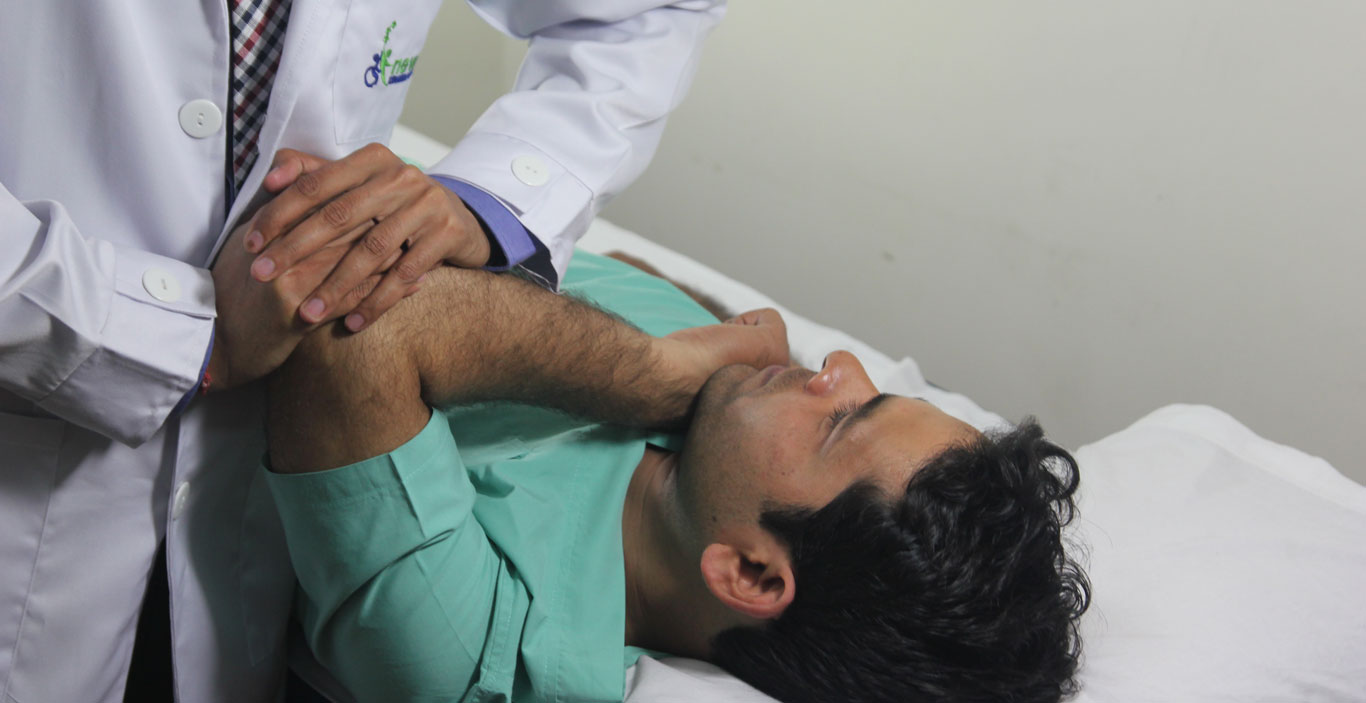
What We Treat
Physiotherapy is a safe, non-invasive, and effective way to improve mobility, reduce pain, and enhance overall quality of life. By promoting proper movement patterns and strengthening weak areas of the body, physiotherapy can help patients achieve their functional goals and get back to their normal activities. So, if you are struggling with any of the above-mentioned conditions, don’t hesitate to consult a physiotherapist to get back to your normal life.
Musculoskeletal Conditions
- Neck Pain
- Back Pain
- PIVD/ Slip disc/ Sciatica
- Frozen shoulder
- Tennis Elbow
- Golfer`s Elbow
- Spondylosis
- Spondylolisthesis
- Lumbar Canal Stenosis
- Facet Joint dysfunctions
- Osteoarthritis
- Rheumatoid Arthritis
- Plantar Fasciitis
- Cervicogenic Headaches
- Strains & Sprains
- Post Fracture Stiffness
Neurological Conditions
- Stroke/ Hemiplegia
- Traumatic Brain Injury
- Spinal cord injury patients
- Gullian Barre Syndrome
- Muscular Dystrophy
- Parkinson’s Disease
- Cerebral Palsy/ Delayed Milestones
- Bell’s Palsy
- Cerebellar Ataxia
- Bladder and Bowel problems
Sports Injuries
- Ankle Sprains
- Shoulder impingement
- Tendinitis/ Tendinosis
- Rotator Cuff Injuries
- Sprains & Strains
Post-Operative Rehabilitation
- Total Knee Replacement
- Total Hip Replacement
- Rotator Cuff Repair
- ACL Reconstruction
- ORIF
- Spine Surgeries
- Craniotomy etc
Cardiopulmonary Conditions
- CABG
- Valve Replacement Surgery
- Heart Transplant
- PTCA
- LVAD
- COPD
Gynecological and Obstetric
- Ante and Post Natal
- Stress Incontinence
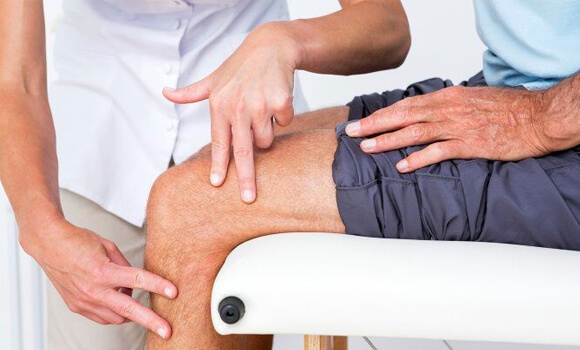
Knee Osteoarthritis (Knee OA)
Degenerative disease of synovial joints that causes progressive loss of articular cartilage.
Incidence: Symptomatic knee OA – 240 per 100,000 per year.
Risk factors: articular trauma, Occupation, Repetitive knee bending, Muscle weakness, Large bodymass, Metabolic syndromes.
Females affected more than males.
Symptoms: function-limiting knee pain, effect on walking distances, pain at night or rest, activityinduced swelling, knee stiffness, mechanicalinstability.
Self-management and education programs combination of supervised exercises and home program have shown the best results these benefits lost after 6 months if exercises are stopped.
Lateral Epicondylitis (Tennis Elbow)
- Overuse injury involving eccentric overload at origin of common extensor tendon.
- Leads to tendinosis and inflammation at origin of Extensor Carpi Radialis Brevis (ECRB) tendon.
Affects 1-3% of adults annually.
Symptoms: Pain with resisted wrist extension, Pain with gripping activities, Decreased grip strength.
Point tenderness at ECRB insertion into lateral epicondyle.
Radiographs may reveal calcifications in the extensor muscle mass (up to 20% of patients).
Medial Epicondylitis (Golfer`s Elbow)
- An overuse syndrome of the flexor-pronator mass origin.
- Five to ten times less common than lateral epicondylalgia.
Common in people with jobs involving lifting >20kg, forceful grip, exposure to constant vibration at elbow (plumbers, carpenters, construction workers).
Symptoms: Insidious onset pain over medial epicondyle, Worse with wrist and forearm motion, Worse with gripping.
- Tenderness 5-10 mm distal and anterior to medial epicondyle.
- Pain with resisted forearm pronation and wrist flexion.
- Radiographs can identify posterior-medial osteophytes or degenerative changes.
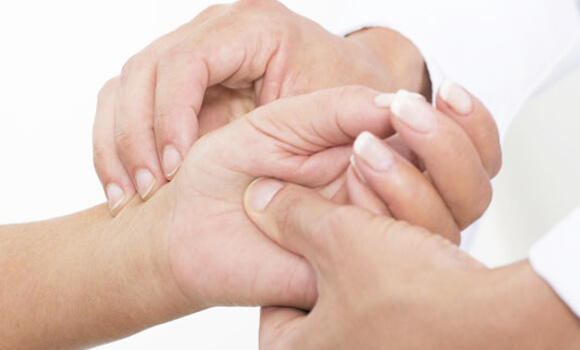
Carpal Tunnel Syndrome (CTS)
Most common compressive neuropathy. Pathologic (inflamed) synovium is the most common cause of idiopathic CTS.
Affects 0.1-10% of general population.
Risk factors: Female sex, Obesity, Pregnancy, Hypothyroidism, Rheumatoid arthritis, Advanced age, Chronic renal failure, Smoking, Alcoholism, Repetitive motion activities, mucopolysaccharidosis, mucolipidosis.
Symptoms
- Numbness and tingling in radial 3-1/2 digits
- Clumsiness
- Pain and Paresthesia that awakens patient at night.
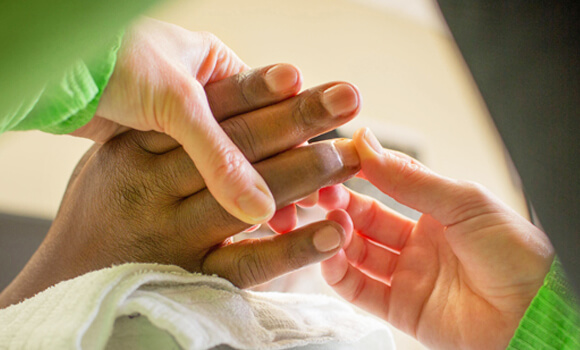
Trigger Finger
- Stenosing tenosynovitis caused by inflammation of the flexor tendon sheath.
- More common in diabetics.
- Ring finger most commonly involved.
Symptoms:
- finger clicking
- Pain at distal palm near A1 pulley
- Finger becoming locked in flexedposition
Physical exam: Tenderness to palpation over A1 pulley, A palpable bump may be present near thesame location.

De Quervain’s Tenosynovitis
- Overuse injury involving eccentric overload at origin of common extensor tendon.
- Leads to tendinosis and inflammation at origin of Extensor Carpi Radialis Brevis (ECRB) tendon.
Affects 1-3% of adults annually.
Symptoms: Pain with resisted wrist extension, Pain with gripping activities, Decreased grip strength.
Point tenderness at ECRB insertion into lateral epicondyle.
Radiographs may reveal calcifications in the extensor muscle mass (up to 20% of patients).
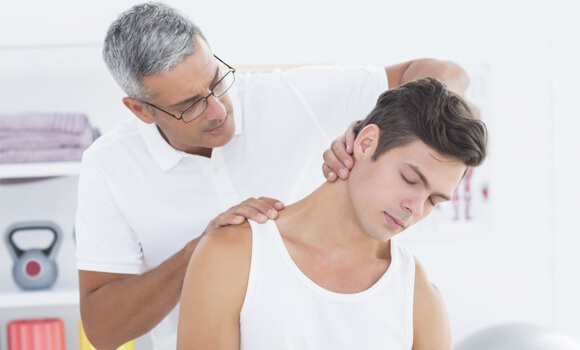
Cervical Spondylosis
- Cervical spondylosis represents the natural degenerative process of the cervical motion segments (intervertebral disc and facets)often leading to the clinical conditions of cervical radiculopathy, cervical myelopathy, discogenic neck pain.
- Typically begins at age 40-50.
- Eighty five percent of patients >65 years of age demonstrate spondylotic changes regardless of symptomatology.
- More common in men than women.
- Most commonly affected levels are C5-6 > C6-7 as they are associated with the most flexion and extension movements in the sub-axial spine.
Risk factors: Excessive driving, Poor posture, Heavy lifting, Professional athletes
Radiographs: Degenerative changes of uncovertebral and facet joints, osteophyte formation, discspace narrowing, endplate sclerosis, decreased sagittal diameter of spinal cord (canal diameter is < 13mm).
Clinical Presentation: Axial neck pain, Cervical radiculopathy, Cervical myelopathy.
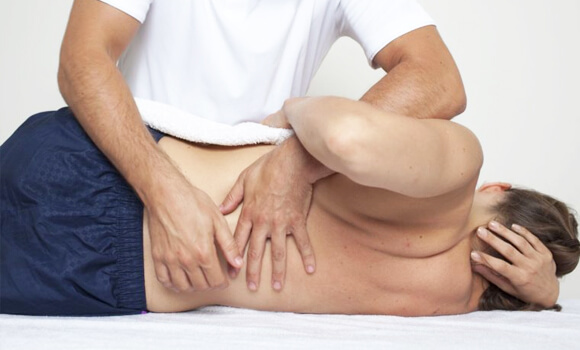
Spondylolisthesis
Caused by a defect in the pars interarticularis which is usually acquired and caused by microtrauma.
Incidence: seen in 4-6% of population with increased prevalence in sports that involve repetitive hyperextension (gymnasts, weightlifters, football linemen).
Location: 82% occur at L5-S1, 11% occur at L4-5.
Symptoms: axial back pain, Leg pain, Usually a L5 radiculopathy caused by foraminal stenosis at theL5-S1 level, Neurogenic claudication caused by spinal stenosischaracterized by buttock and leg pain which worsens with walking (rare), Cauda equina syndrome (rare).
Radiographs: AP, lateral, obliques, and flexion-extension are the recommended views; flexion-extension instability defined as 4 mm of translation or 10° of angulation of motion compared to adjacent motion segment.
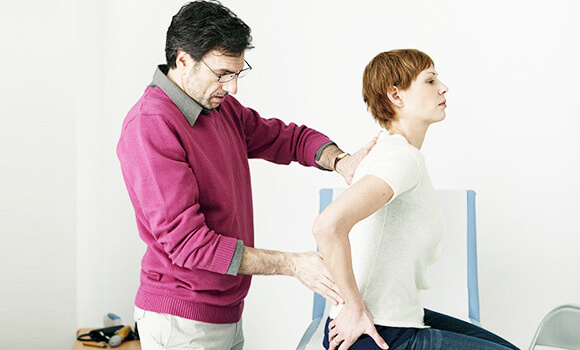
Ankylosing Spondylitis (AS)
A systemic chronic autoimmune spondyloarthropathy characterized byHLA-B27 histocompatability complex positive (90%), RF negative (seronegative), primarily affecting axial spine.
Male:Female = 4:1
Usually occurs in 3rd decade of life; juvenile form (< 16-yearsold) includes enthesitis. Fewer than 10% of HLA-B27 positive patients have symptoms of AS.
Symptoms: lumbosacral pain and stiffness is present in most of the patients which worsens in the morning, Insidious onset in 3rd decade of life, Neck and upper thoracic pain occurs later in life, acute neck pain should raise suspicion for fracture, sciatic pain, Loss of horizontal gaze, Shortness of breath caused by costovertebral joint involvement, Leading to reduced chest expansion.
Radiological findings: Squaring of vertebrae with vertical or marginal syndesmophytes, Late vertebral scalloping (bamboo spine), Bilateral symmetric sacroiliac erosion, earliest radiographic sign is erosionof iliac side of sacroiliac joint,Joint space narrowing,
Ankylosis.
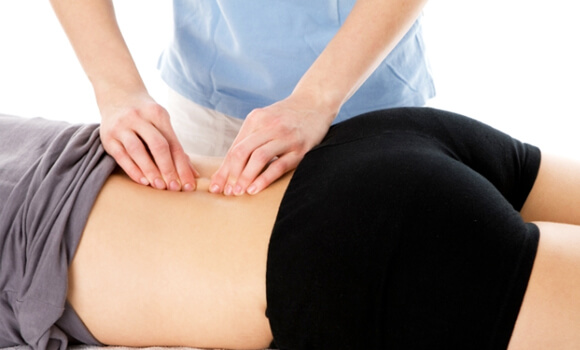
Lumbar Spinal Stenosis
Reduction in dimensions of central or lateral lumbar spinal canal caused by bony structures (facetosteophytes, uncinate spur, spondylolisthesis) or soft tissue structures (herniated or bulging discs, hypertrophy or buckling of the ligamentum flavum, synovial facet cysts).
Radiographs: Standing AP and lateral views may show nonspecific degenerative findings (disc spacenarrowing, osteophyte formation), degenerative scoliosis, degenerative spondylolisthesis).
MRI findings include: Central stenosis with a thecal sac < 100mm2obliteration of perineural fat and compression of lateral recess or foramenfacet and ligamentum hypertrophy.
